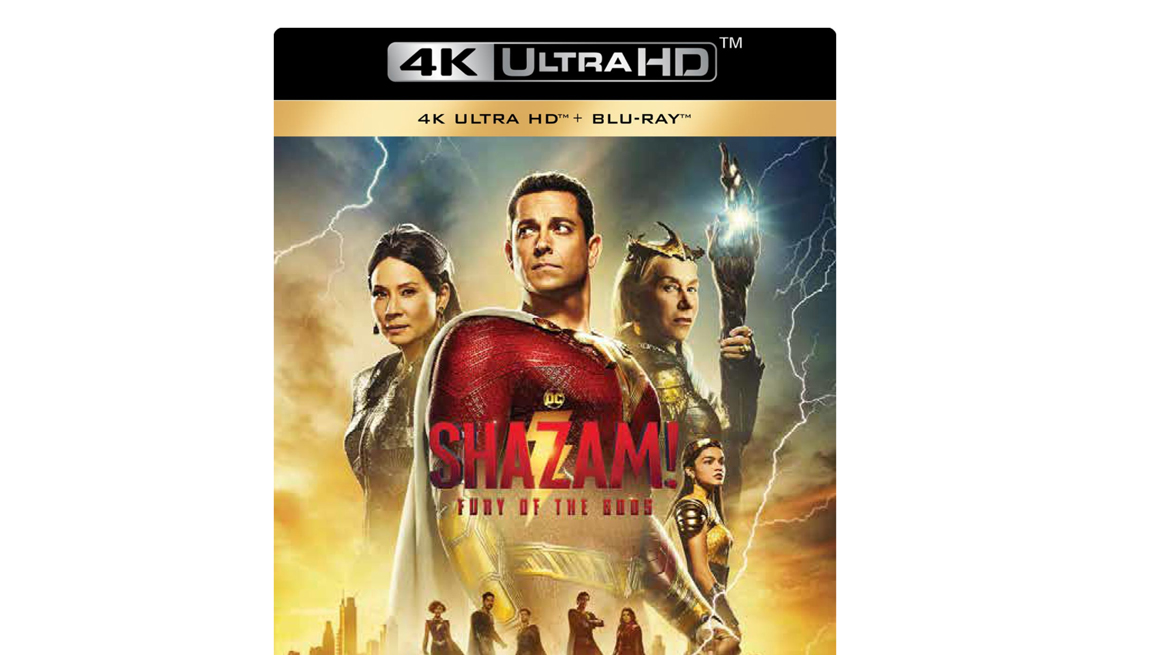TL;DR
Billy Batson and his foster family can turn into superheroes by saying "Shazam!" but their powers are tested by the Daughters of Atlas. While the film has entertaining action and a heartwarming core, it struggles with a disjointed portrayal of Shazam, jarring humor, and inconsistent CGI. Despite its flaws, the stunning 4K UHD presentation with Dolby Atmos audio makes for a visually and audibly impressive experience, even if the sound mix is a bit quiet. Discover if this superhero sequel is worth your time in the full review!
Billy Batson (Asher Angel) is nearing his 18th birthday, causing him anxiety about potentially aging out of the foster care system. He and his five friends possess the ability to transform into superheroes by uttering the word Shazam!, with Billy becoming his adult superhero alter-ego, Shazam (Zachary Levi). His friends also assume adult superhero forms, but retain their youthful mindsets. When the Daughters of Atlas, a formidable new enemy, emerge, Billy Batson and his friends are the only ones who can oppose them. With the fate of Earth at stake, they discover a third sister, previously unknown, further complicating the situation.
Director David F. Sandberg (not to be confused with David “Kung Fury” Sandberg) returns, but Shazam! Fury of the Gods unfortunately lacks the cohesion of the first film, Shazam! (2019). A key issue lies in the portrayal of Shazam by Zachary Levi, which does not align with Billy Batson’s impending adulthood. Levi’s interpretation of Shazam differs significantly from Angel’s portrayal of Batson. While Batson exhibits maturity and sound judgment, Shazam often struggles with coherent communication. This disconnect between the two personas, who are meant to be the same individual, is jarring. While Billy Batson remains ageless in comic books and animated adaptations, the actors portraying him inevitably mature.
Shazam! Fury of the Gods feels unfocused, resulting in strained humor, particularly from Levi, whose performance can become grating. Helen Mirren and Lucy Liu add considerable appeal as the villainous sisters. While I will refrain from revealing the identity of the third sister to avoid spoilers, her introduction feels somewhat contrived and out of place.
Another significant drawback of Shazam! Fury of the Gods is the inconsistent CGI. One rooftop sequence, initially perceived as entirely green-screen due to its artificial appearance, was reportedly created using practical effects to a large extent. However, the surrounding visual effects made even the physical elements appear computer-generated, which is a considerable disappointment.
Having addressed the shortcomings of Shazam! Fury of the Gods, it’s important to acknowledge its strengths. The film features several well-executed and engaging action sequences, such as the bridge scene at the beginning. Furthermore, the film contains a genuine warmth and emotional core, enhanced by competent direction.
The UHD edition, presented in 2160p with HDR, is a definite highlight. The film’s visually spectacular scenes are reproduced with excellent clarity, free from artifacts or color banding. The Dolby Atmos sound design is effective, especially during sequences where the environment is dynamically reconstructed around the characters, providing immersive surround sound. However, the audio mix is noticeably quiet, requiring an increase of approximately ten decibels on the amplifier to achieve the desired listening level.
The release also includes several well-produced documentaries of varying lengths and deleted scenes. The inclusion of a director’s commentary track is a welcome addition.
In conclusion, Shazam! Fury of the Gods is hampered by script and directorial missteps. However, a heartwarming narrative foundation persists. Considering this, and the quality of the UHD presentation, I can still recommend the film. When Shazam! Fury of the Gods succeeds, it is genuinely entertaining.
SF Studios provided review copies for this evaluation. The provision of materials does not influence our editorial objectivity. Our reviews are conducted independently, with our readers and consumers as our primary focus.

